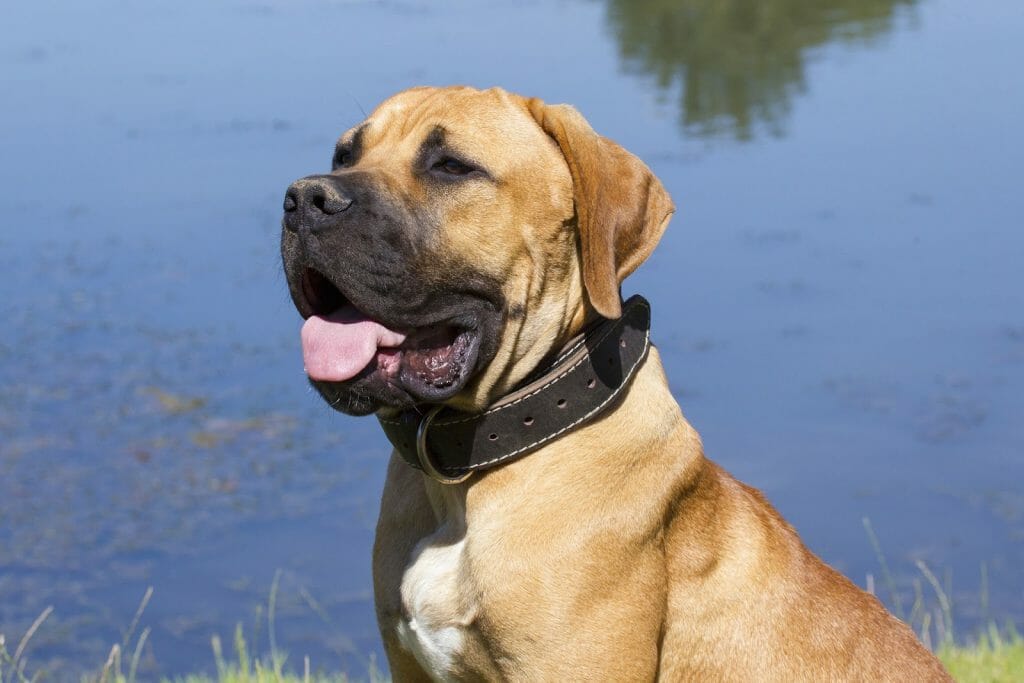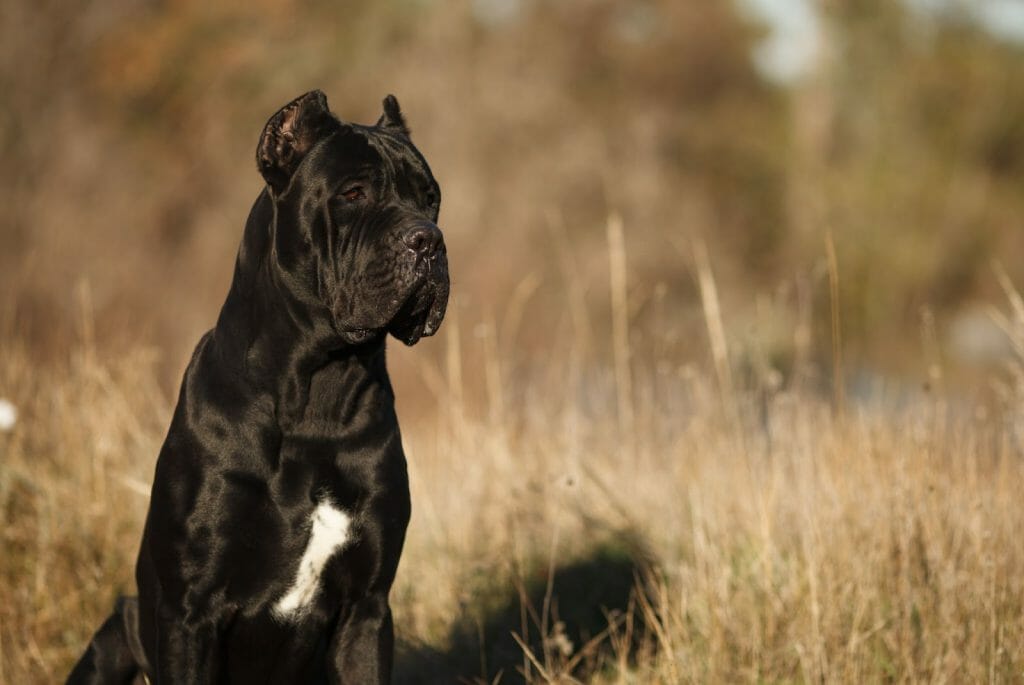Boerboel vs Cane Corso: Highlighting Differences
In comparing the Boerboel and the Cane Corso, you’d find out that these two rare dogs come from different countries. For the most part, they have similar personalities, but their physical build makes each one distinct from the other. Indisputably, Mastiffs like these two mentioned can spark anyone’s interest just by how they look. If you’re looking to own a large canine as a family addition, the first step is to get to know your prospective dogs first. Here’s all the information you need:
Table of Contents
Breed Origins
Boerboel
Hailing from South Africa, the Boerboel’s name is pronounced as “Boo-r-bull”. “Boer “ literally means farmer in Afrikaans and “bul” translates to big. In other words, this canine is a farm dog. There’s no exact evidence that would point us to how this dog came about but people claim that he was a product of dogs brought by British, Dutch, and French settlers in South Africa in the 17th century.
Furthermore, the Bullmastiff and the Bulldog were two of the foundations in this dog’s development. Other more undocumented dogs contributed to the genealogy of the South African Mastiff. These days, the Boerboel enjoys life as a family companion and a dependable estate guardian. However, he’s not a common pet outside his country of origin.
Cane Corso
If you’re wondering how the name is pronounced, the American Kennel Club (AKC) has the answer for you: it’s “CAH-ne’” and this means dog in Italian. Meanwhile “Corso” translates to “guardian” in Latin. Just from how the name is explained, the hint would tell us that the Corso originates from Italy. He is one of the Molossers that descended from the Molossus dog which is believed to be extinct now.
Cane Corsos are reputed to be reliable guard dogs. Before, you can find several estates with Corsos seriously guarding the grounds. They were also used for hunting games due to their strength and vigor to go after prey like coyotes, wild boars, and lions. This Italian Mastiff had its fair share of crisis when the two world wars happened. The widespread food shortage took a toll on their existence. Luckily, a few were left in remote areas. They were then used to help increase the breed’s numbers.
Size, Appearance, & Coloring
Boerboel


A tawny Boerboel displaying a dark mask- the same feature found in the English Mastiff.
Boerboels look a lot like Cane Corsos, but what sets them apart would be their sizes. Boerboels are much larger than the other as they can reach 150-200 pounds easily. They have a height of 22-27 inches which is a bit low in measure compared to the Corso. Nevertheless, this is a big dog built to be strong with good muscle development.
In his facial appearance, the Boerboel sports a darker mask but not all of them have this. He has a set of beautiful brown eyes that go even darker making him appear mysterious and intimidating. He has a well-angled jaw and a fleshy upper lip. The good news is he drools less than the other Mastiffs.
You can find the Boerboel in different colors such as the following:
- Brown
- Cream
- Red
- Tawny
- Brindle
- Reddish-brown
Cane Corso


A black Cane Corso showing off a big white mark on his chest while sitting in the field.
Right off the bat, Cane Corsos are strong, muscular, and just impressively sizable! According to the breed standards set out by the AKC, an adult Cane Corso can easily reach a height that ranges from 23.5-27.5 inches and a weight of about 85-110 pounds. A huge portion of his weight comes from his broad and large head with ears set high and eyes, very observant to say the least.
The body is well-proportioned and slightly longer than tall. Some, as you’d observe, are docked on the tail and cropped on the ears. The breed has a densely short double-coat that gets thicker during winter and they come in the following colors:
- Gray brindle
- Gray
- Black
- Fawn
- Black brindle
- Chestnut brindle
- Red
Temperament
Boerboel
Boerboels are fearless to the core. They have an insane amount of loyalty to protect their loved ones. When he’s relaxed, his playful, energetic side shows. He’s typically gentle and laid-back when around kids and other pets as long as none of his loved ones feel threatened. Because he’s a big dog and has a strong territorial nature, Boerboels need to be trained extensively.
Also, just like the Corso, owners have to be well-informed on how to raise a puppy of this kind. This is an intelligent and highly-trainable canine, but at the same time, he requires an immovable pack leader. Get him to socialize with other dogs as a puppy so he won’t grow up too overprotective about anything.
Cane Corso
With the Cane Corso’s history as a guard dog, we can easily conclude that this is one tough dog. He needs an authoritative leader that has enough experience in handling massive canines. After all, there’s a tendency for this dog to push boundaries and try to dominate his owner. When this happens, the Corso will prove to be uncontrollable and end up becoming a liability.
When he’s well-socialized, countless behavioral problems are avoided. With his protective nature, it’s just reasonable that he lowers it down by getting exposed to different scents and faces. He’s calm around kids and cautious toward strangers. With proper training, a Cane Corso won’t show aggression without all the right reasons to do so.
Exercise Needs
Boerboel
Exercise largely affects health, so ensure that your Boerboel gets it regularly. Even though he’ll seem like he’s fine with sitting and laying around all day, a little push to get him moving is needed. Grant him opportunities to enjoy the day by giving him some playtime. Be careful not to over-exercise your dog though as he’s prone to overheat. For puppies, stick to the 5-minute rule to keep them from injuries.
Cane Corso
Boost your active lifestyle by bringing your dog along in your daily jogs, walks, or outdoor escapades! The Corso breed is fairly energetic and his body does need some physical and mental stimulation for his overall health. Let him have free play in a closed yard, a game of fetch, or a tug-of-war. Avoid subjecting him to physical activities that would require jumping excessively and the like as these can be damaging considering his heavy weight.
Grooming Requirements
Boerboel
Grooming time is bonding time! Brush your Boerboel a few times a week and an occasional bath when he’s dirty. If he’s working as a farm dog, the frequency gets higher. This is an average shedding dog, but shedding seasons make him shed even more. Use quality brushes to keep the loose hairs from ending up in your couches. Other necessary routines for hygiene must never be compromised.
Cane Corso
Unlike Poodles or other long-haired dogs, the Cane Corso won’t need to visit the salon often. With his short coat, all he needs is a brush! Run this all over him just to simply take off his loose hairs before they fly anywhere. Wash him every 6-8 weeks to keep the hygiene excellent. In using bathing products, they all have to be mild so you don’t strip off his natural oils. Don’t forget that his nails, teeth, and ears need cleaning too.
Health Problems
Boerboel
Boerboels are healthy dogs, no doubt. However, they have to be screened for dysplasia as they’re prone to that. Ophthalmologist evaluation is required as well since the breed suffers from eye issues. Other complications that can develop are:
- Vaginal hyperplasia
- Patellar luxation
- Bloat
- Heart disease
Cane Corso
We all want our dogs to live long years. One of the great ways to achieve this is by keeping watch of their health. Cane Corsos may be generally healthy, but they remain susceptible to the following health problems:
- Gastric volvulus
- Epilepsy
- Cancer
- Hip & elbow dysplasia
Breed Popularity
The AKC pronounced that out of 202 dog breeds, the following Mastiffs ranked splendidly. Check the details below:
Boerboel: 121st
Cane Corso: 32nd
Which Dog Suits You Better?
In all honesty, Boerboels and Cane Corsos have very few differences. You really just have to look at their size and individuality. You can say that the Cane Corso is the smaller version of the Boerboel. If you can handle a bigger dog, then go for the African Mastiff! However, spend some time with the dogs first before ultimately taking the puppy home.
